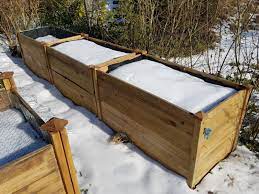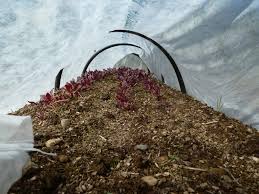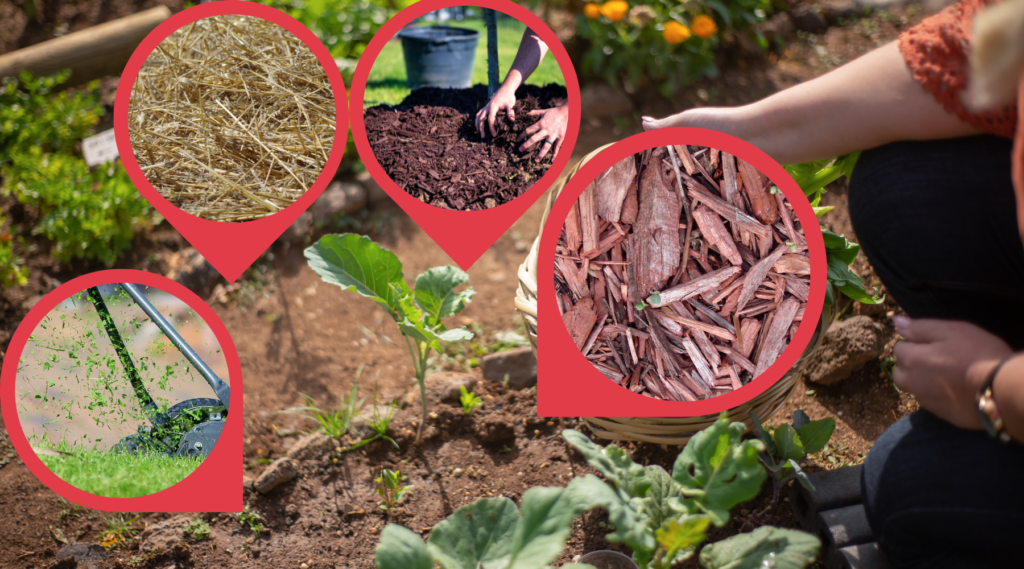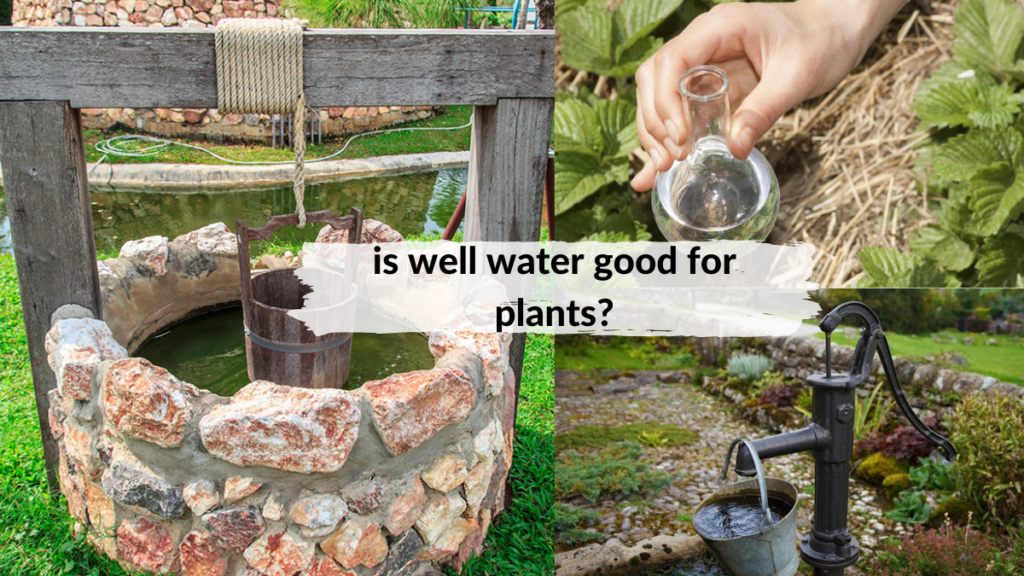Once the gardening season ends, you might get distracted completely from cleaning up before winter. Preparing your raised garden for the winter or winterizing it as some long-time gardeners would call it is a crucial part of the annual cycle in backyard gardens. This will also prepare your garden for the next season even when next spring is still months away.
During fall, gardeners should start taking steps in ensuring that their raised garden beds will be ready for the seeds and transplanting seedlings by the next gardening season. For some, they treat this as a to-do list for their garden.
Caring for your raised garden bed before the winter season starts settling in will help promote soil health, prevent diseases, and ward off weeds. This will prepare your raised garden for the next year’s crops.
preparing your raised garden bed for the winter
As much as you want to skip all the work after the growing season, you must spend time preparing your raised beds even before the cold season hits. So, to get started, make the following your regular to-do list every year before winter.
remove weeds
Weeding is an important task that you should do during fall especially when most of your crops stopped growing. Untended fall weeds will eventually harbour disease and might lay roots for more weed problems in the future.
Most people will probably skip this part, but this is among the important things to do. A lot of these weeds will set weed seeds by this time and these seeds may stay viable for the next 40 years.
If you notice that there are parts of your raised bed that are carpeted with weeds, you can cover these areas with black plastic or cardboard. Leave it be throughout the winter season. This will choke out existing weeds and suffocate all sprouting weeds.
You might be tempted to till the soil to expose any harmful pests hiding in the soil and prevent weeds, but it is recommended that you avoid this. It will help maintain soil health.
Unless the soil is compacted, tilling can be done in raised bed settings. However, it does not really make sense in this setting. If it is possible to avoid tilling, try to do it and the soil as well as the garden beds will thrive in the coming years.
get rid of dead plants
It is better that you get rid of dead plants as soon as possible. Leaving dying plants can make a lot of problems with the soil. Decaying roots, stems, and foliage are easy targets for diseases and pests. Though they are dead, these plants still take valuable nutrients from the soil.
Make sure to remove old plants once they start to die. See to it that you remove not only the parts of the plants you see on the surface but the roots as well. Also, clear out any seed heads that are on the soil. You can add all the dead plant material including the roots and foliage to your fall compost pile.
If you are growing perennial plants in your raised garden bed, this is the right time to cut them. Just like when leaving other plants and foliage throughout winter, perennial plants can also provide cover for harmful pests. Finish it off by covering these plants with a few inches of winter mulching.
recharging your soil
Fall is the perfect season to add soil amendments and recharge the soil to have it prepared for the next gardening season after winter. This can be done by doing several individual procedures or you can combine all of them.
· add compost
Power up the soil in your raised garden beds by topping it off with a dressing of compost before the ground freezes. You do not have to dig to add the compost, but you just have to lay it on top of the soil. Finished compost will break down throughout winter and add nutrients that will leach into the soil slowly.
· add composted or aged manure
Cow, goat, rabbit, horse, and chicken manure are abundant with nutrients that are needed in recharging the nutrients in your raised beds. Composted or aged manure can be bought in bags and has no pungent odour, unlike fresh manure. Just spread out a light layer of manure on top of the garden beds even before the ground freezes.
Fresh manure can also be used if you do not have overwintering plants. Burning plants should not be a problem as there will be enough time for the manure to break down over the winter.
Make sure to cover the manure throughout the winter months to prevent erosion and nutrients from leaching away.
· planting a cover crop
Considering the idea to sow cover crops is among the best ways to protect and recharge traditional gardens. It can also be used for powering and protecting raised beds.
Winter cover crop roots work down deep and open up all air channels to break hard soils. On the top, the foliage will prevent soil erosion, weed seeds, and weeds during winter. When spring comes, you can mow the cover crops and combine the foliage back into the soil to recharge the raised beds.
As you plant cover crops like winter rye, you can simply mow it off till the crop dies and immediately plant on it. Seed in during the fall season, let it grow, cut it, and plant again.
cover the soil during winter
If you have already planted cover crops, you can make sure that the soil is protected from erosion and all possible issues that the winter may bring to your raised bed. However, if you are going to use aged or composted manure, you still need to cover every garden bed.
You can use a thick layer of leaves to cover the beds. Leaves can also provide nutrients that will provide the same benefits as manures to the soil. Straw mulch and grass clippings can also be used. This incorporates fresh organic material into the soil as the mulch breaks down.
An alternative to these materials is the use of a black plastic sheet or tarp not only to protect the soil surface from ice, wind, and snow but also to keep weeds and weed seeds off of the soil. This also prevents soil erosion in the long run.
dos and don’ts in winterizing your raised beds
There are other things that you can do to take care of your raised garden beds during the winter season. Some of the Dos and Don’ts that you should keep in mind are the following:
dos
1. prune and trim
It might seem unneeded but a good and clean fall pruning and trimming before the colder season will help them in starting again next season. This will also make them healthier.
Focus fall pruning efforts on plants that need it like herbs, asparagus, and rhubarb.
2. divide plant bulbs
If your garden bed is growing flowers, fall is the right time to prepare them for the next growing season. Start lifting the bulbs and separating them so that they are ready to be transferred or planted in another raised bed. Planting bulbs is best done now for spring.
3. build a roof
If you want to keep a winter garden bed, you should consider building a roof to protect raised beds from the worst of the cold weather. This will also keep them warm during the cool temperatures.
Just make sure that the roof you are building will not stop the sunlight from reaching your plants. So, considering putting a see-through cover for the roof. This way, your garden will get enough winter protection while not affecting the plant growth throughout the cold season.
4. plan for leaf and snow removal during winter
To ensure healthy vegetation, you still need to tend to your garden despite the cold weather. Yes, you can just leave the leaves on top of the raised garden beds, but you might want to remove these in areas where you are continuously growing plants.
Simply remove the leaves and compost them to make a leaf mold. You can use this to top-dress the garden beds next fall.
With snow, they actually act as a good insulator so there is no need to remove it. If you decided to plant garlic in winter, the snow can act as a blanket. Areas that are harvested actively will benefit from regular snow removal. If your garden beds have glass cold frames and plastic polytunnels, these might not be able to hold the continuous snow load so these must be cleared of snow regularly.
don’ts
1. ripping everything from your garden beds
One way to keep growing the fruits, flowers, or vegetables that you now have is by not removing them all and letting the plants go to seed. This means you just let them grow throughout winter and let their seeds drop on the soil. This way they can replant themselves and be ready for the next spring planting.
You can just pull them out by spring, churn the soil, and see what starts growing in your garden. By then, you can choose which ones you want to keep and those that you want to remove.
2. pruning soft plants right before cold season
Understand that some plants can handle fall pruning and some cannot. If there are plants that you cannot prune before the sold season starts, you can just wait for spring to trim them.
Get to know which plants can handle the pruning to learn which ones may die when you cut them. There are also those that may not kill it but could make it sick. Make sure to wait for a few weeks of average weather to recover after the trimming and pruning before the cold season starts. If not, they will not be able to protect themselves once the winter begins.
3. letting everything dry out
Winter might be the time when you would want to water your garden beds. However, you still need to keep watering them. You must not leave perennial plants thirsty, especially when you are expecting them to survive the winter season.
Even if there is nothing growing in the soil, you should not let it dry completely before the weather starts getting cold. Water is considered a great protector for plants against frost.
The winter season is often called “the hunger gap”. This is because the garden is not producing enough food, unlike the summer months. Most of the plants in the beds have died back.
Though you might think that there is nothing left to do, well, there are still a lot of things you have to add to your list. There are still some vegetables that can grow continuously, and you can harvest from your winter garden beds.
Make sure that you spend time preparing your raised garden beds before the cold weather sets in. This way, you are assured that they are ready once the growing season starts and continue growing healthy plants eventually.










